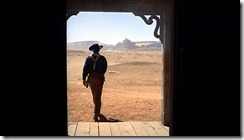The organization of information and how it’s used in context is something dear to the heart of any librarian. It’s especially interesting to me because of my interest in computers and digital information. While it sounds like a dry and boring subject, it doesn’t have to be. It’s all in how you approach it. Sure, we could discuss the best ways to digitally archive and distribute access to documents. Or we could talk about how this one room should have a hidden door off to one side and inside the hidden room should be a magical crossbow which deals an extra three points of damage to undead creatures.
Both are informative, but one is far more fun than the other.
 When I was a kid I had a book. Well, actually I had several books, but this one was very special to me. It was The Official Nintendo Player’s Guide and, as the subtitle suggests, it was "A complete review of over 90 games for your N.E.S." Ah, isn’t that quaint? They put periods in NES!
When I was a kid I had a book. Well, actually I had several books, but this one was very special to me. It was The Official Nintendo Player’s Guide and, as the subtitle suggests, it was "A complete review of over 90 games for your N.E.S." Ah, isn’t that quaint? They put periods in NES!
Anyway one of the 90+ games they covered was Metroid, a game that still remains close to my heart. Besides the incredibly biased reviews (This was a game made by Nintendo for the Nintendo and then reviewed in a Nintendo book written and published by Nintendo.) they also did the small service of providing a map to the game.
All of the game.
I no longer have that book or that map, but here’s another very good map in the same style. Click to embiggen it:
Look at that! That place is huge! And keep in mind we’re talking about the 8 bit days here. Do you know how much time and trouble this map saved me and how enjoyable it made the game? See, I play games for fun and to relax. A game that’s pissing me off because I can’t find something hidden in Sub-Basement 6 of the Fire Level isn’t going to relax me and it’s not going to be fun. Even though I knew there were parts of that map I couldn’t yet access, at least I knew where things were and that was comforting.
This map also fostered an interest in video game level design. As time passed, levels became worlds and worlds became planets. I’m no expert at this stuff, but the idea of creating worlds from nothing, and then populating that world with enemies, flora, fauna, atmosphere, and more? It’s truly a godlike experience.
 So I want to share with you the current state of that experience. There’s a newer game on the market called Red Dead Redemption. It’s awesome. I just snagged a copy of it a few days ago and it’s everything I hoped it would be. It’s a game that harkens back to something done by millions of kids all over America: You get to play an adult version of Cowboys and Indians.
So I want to share with you the current state of that experience. There’s a newer game on the market called Red Dead Redemption. It’s awesome. I just snagged a copy of it a few days ago and it’s everything I hoped it would be. It’s a game that harkens back to something done by millions of kids all over America: You get to play an adult version of Cowboys and Indians.
It’s a spaghetti western with just a touch of The Sacketts thrown in for good measure. The style of the art work and cinematics is completely inspired by Sergio Leone and the music is pure Ennio Morricone. Also, as you can see in the image above right compared to the one below left, it’s also channeling a bit of The Searchers.
 But what has this to do with information?
But what has this to do with information?
See, when you create a world like this, a virtual place that lives only in the computer, you have to lay out everything. In the case of Redemption, this means the placement of weeds, trees, riders on horseback, and, as is so wonderfully demonstrated here, you have to control the weather and the passage of day and night. Weather, sunset, and sunrise are three of the most basic forms of information that have been important to humankind since prehistory. We’ve marveled at, cowered from, and patiently observed these bits of information for hundreds of thousands of years.
Now we can emulate them… for fun.

